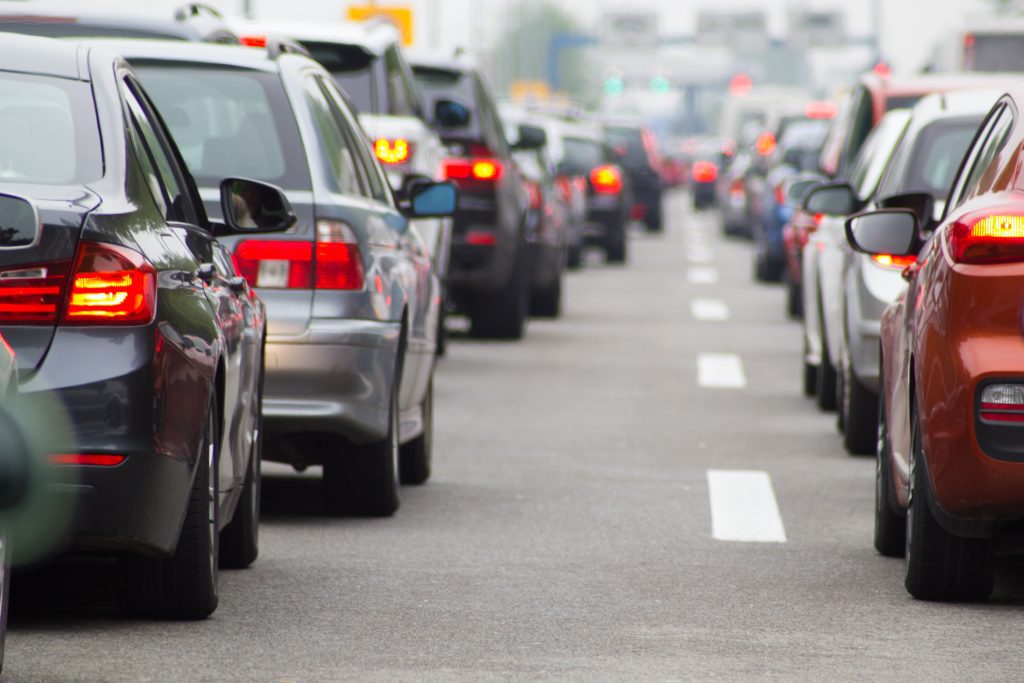Do you ever feel like you’re driving along, and a traffic jam appears out of nowhere? What’s worse is having no apparent reason for the road being gridlocked! There are a few reasons why traffic jams occur, from someone braking harshly to skipping a red light, a traffic jam can happen in an instant! The blog below looks at how traffic jams are caused and the effects of them.
Main causes of traffic jams:
1. Harsh braking.
When someone hits the brakes suddenly, it can cause a knock-on effect on the traffic behind. Slowing down will prompt the driver behind to press their brake too and ends up as a chain reaction. Eventually, the traffic may come to a standstill.
Below is an insightful video of how phantom traffic jams occur. ⤵️

2. Queuing across a junction.
One of the most annoying driving habits many drivers have is not forethinking at a junction. Many junctions have a clearly marked yellow zig-zag box which you should never wait or stop in. If you don’t plan ahead, drive too fast or skip the lights, you could end up blocking the junction and blocking other vehicles from crossing when it is their turn.
3. Rubbernecking.
Rubbernecking is one of the main causes of traffic jams in the UK. It is the term to describe a driver who deliberately slows down and takes their eyes off the road to look at a traffic accident or incident. Rubberneckers are people who want to be nosey and know what is going on. You may have even noticed your lane slows for no reason if there is an incident on the other side of the road. This is due to drivers wanting to get a look at what is going on.
4. Weather conditions.
Did you know traffic jams can be caused by the weather? One thing we as drivers don’t have control over is how the weather conditions will affect our journey, but we can control how safely we drive in adverse weather. Things like heavy rain, ice roads or windy conditions can cause traffic to slow or increase the risk of road collisions occurring.
How to drive safely in winter.
5. Skipping a red light.
Not only is driving through a red light illegal but it is also dangerous. It can increase the risk of a road accident occurring and also puts other drivers at risk. Other drivers may then be cautious to move when their light is on green, creating a slower wave of traffic. If you’re caught driving through a red light, you can receive three points on your license and if the move was particularly dangerous, you could even go to court!
6. Tailgating the car in front.
Tailgating is when a driver is driving too close to the car in front. You can even land yourself with a fine if you dare caught tailgating another car on the road. When you drive too closely, it makes it harder for people to merge in the lane and means you’ll no doubt be hitting your brakes more often. Applying your brakes then has a knock-on effect to the cars behind you to do the same.
7. Road traffic accidents.

A road traffic accident or incident is one of the most common reasons for a traffic jam to occur. For example, if a car crashes into another car and is waiting for help from an emergency service, traffic will be held up for a time. Incidents in one lane could make the lane blocked and the drivers will move to the other lane to get past the incident, this will slow the traffic and eventually bring it to a stop.
8. High volume of traffic.
And finally, the most obvious reason for traffic jams to happen is a heavy influx of traffic. It can be hard to avoid traffic jams during rush hour or peak times. Traffic in the UK is busiest (on average) from around 7:30 am ’til 9:30 am and again around 4:00 pm ’til 6:30 pm, Monday – Friday.

